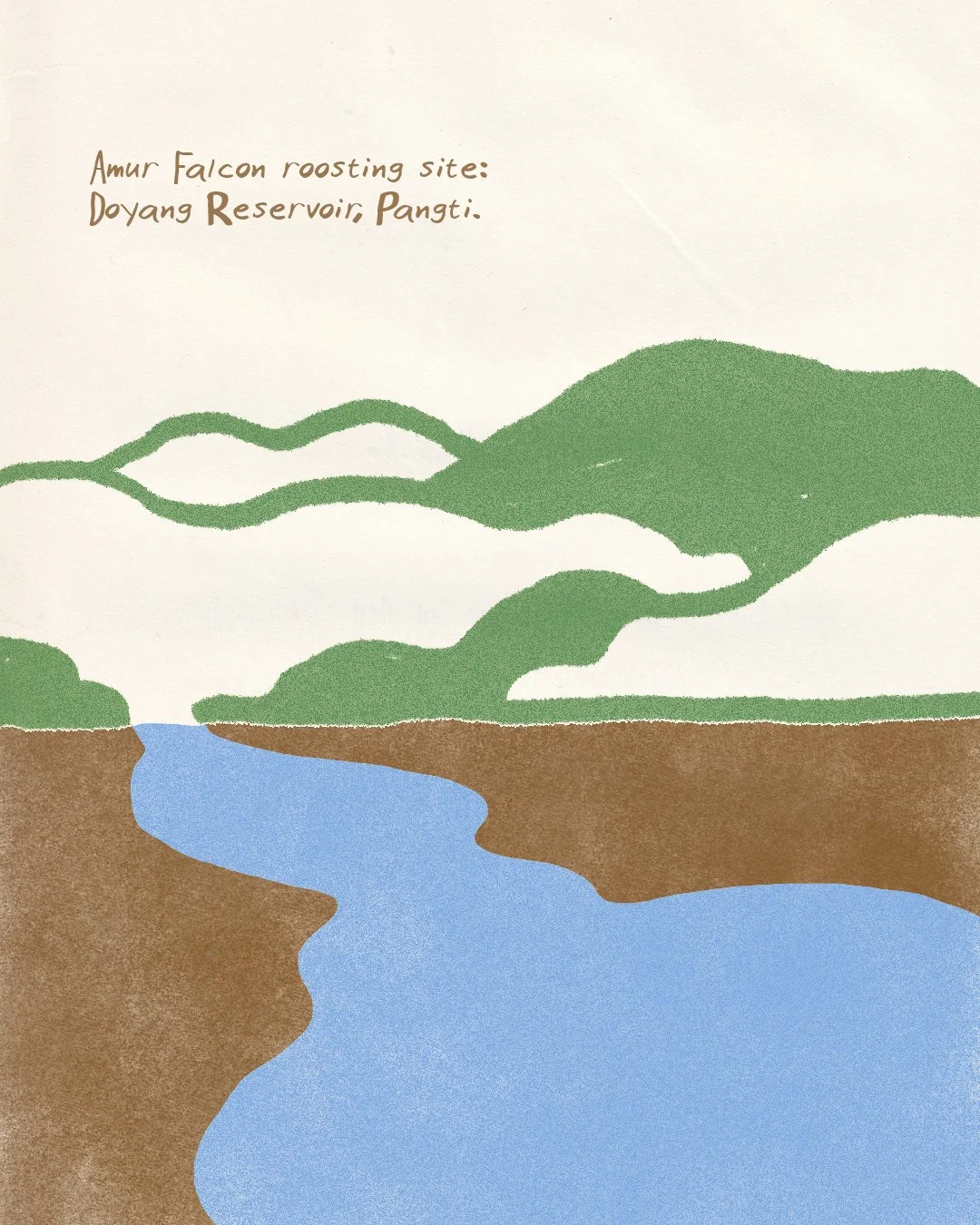Where Raptors Rest.
A small hamlet in Nagaland hosts the largest raptor congregation in the world.
Every autumn, between mid-October to mid-November, the people of Pangti patiently wait for a spectacular avian landing that unfold in their otherwise uneventful village.
No, we are not talking about an airliner.
Neither do we know why tens of thousands of Amur Falcons choose this tiny hamlet in Nagaland as their host. All we know is, this is the only stopover for the longest open-sea raptor migration in the world. They roost here during their annual migration from breeding grounds in Russia, China, and Mongolia to wintering areas in Southern Africa.
Here, sheltered by the steep hills and surrounded by the waters of the Doyang reservoir, they rest, forage, and build their strength for the long journey ahead. Unlike most raptors, these falcons are adorably small, no larger than a common pigeon. The males sport sooty grey feathers with striking white under-wings and rufous-coloured thighs, while the females display a paler, streaked underside.
Social behaviour of this magnitude, and the length of the flight, are both rare for raptors.
For the ornithology world, this is mysterious and marvellous. For the locals, it is a bioindicator of the incoming cold days, and - a delicacy.
Historically, not many have ventured into remote areas of Nagaland. And for decades, this practice of preying on the migratory falcons remained a secret.
Until 2012.
A team from Conservation India visited the Wokha region at a critical time. The Amur Falcon is covered under the Convention on the Conservation of Migratory Species of Wild Animals (CMS) and are also protected by national legislation in India. This was illegal harvesting on a scale that was completely unsustainable. They spearheaded an impactful campaign that triggered worldwide outrage, leading conservationists to unite in protecting the falcons.
The Indian government responded immediately. Together with the Nagaland Forest Department, an armed Forest Patrol Force was deployed to visit the area, remove the nets used to trap the falcons and to release any captive birds that were found alive.
Now here is the part we love the most.
Bano Haralu, a local community member and managing trustee of the Nagaland Wildlife and Biodiversity Conservation Trust, led a campaign alongside Conservation India to halt poaching and educate the community about this beautiful bird, it’s long arduous journey and how they chose their village to rest and recoup.
(Read more about Bano Haralu in this feature by Sanctuary Asia Foundation.)Learning about the raptor's remarkable migration and their village's pivotal role, the locals were overwhelmed with a feeling of having let down the world. The awareness campaigns successfully instilled a sense of pride in their little village, and suddenly, the school of thought changed to - "What can we do to help?"
They couldn’t bear the thought of the world seeing their village as the predators of these birds, who came here meaning no harm but to rest their wings. Today, they collectively monitor the site for poachers, serve as trained guides, run homestays, and host people from across the globe.
This proves that a sense of pride is paramount in driving the will to protect a place.
This is where education and awareness are our greatest assets, and oldest allies.
Our sources, and where you can read more on this:
1. This article by The Nagaland Wildlife & Biodiversity Conservation Trust on Medium.
2. This article by Nick P. Williams for The Convention on Migratory Species (CMS).
3. This article by Dr Seshadri KS for Roundglass Sustain.
4. This video from Roundglass Sustain documents it excellently.

